Stuart Forster heads to Slovenia’s second city and provides an overview of things to do in Maribor.
Disclosure: Some of the links below and banners are affiliate links, meaning, at no additional cost to you, I will earn a commission if you click through and make a purchase.
“Mariborians are very happy in the sun,” says Tomaž, my guide for a two-hour walking tour of Maribor. The sun has just broken through the clouds over Slovenia’s second city.
“If you produce a lot of white wine you also have to drink it. That’s why Mariborians are happy,” he jokes. The city is set within the Štajerska Slovenia wine region.
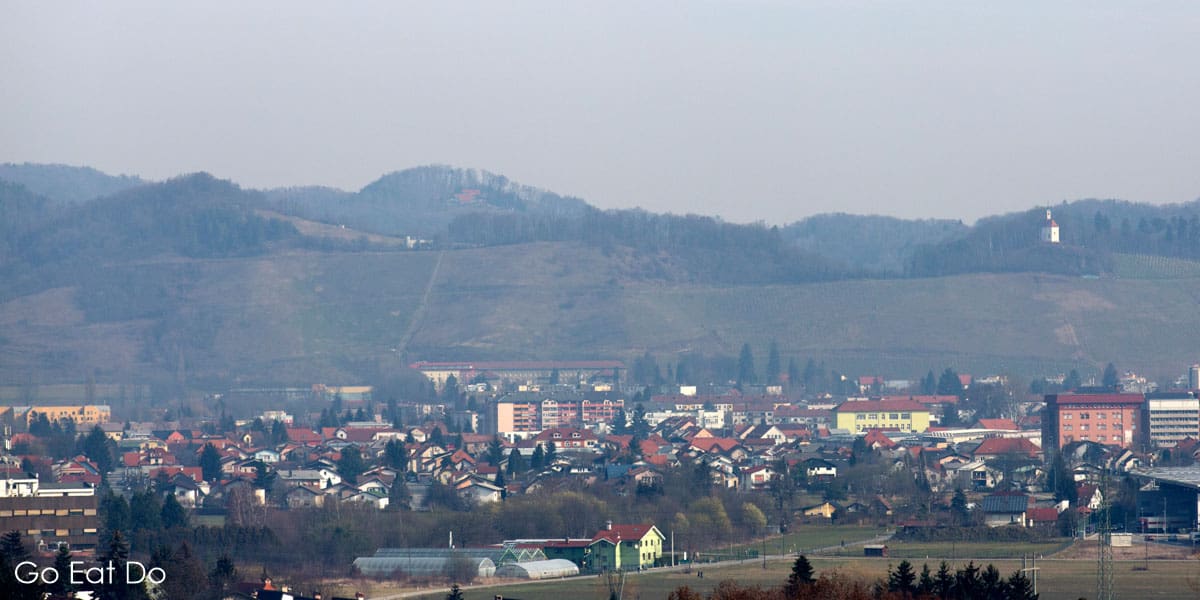
Wine production in Maribor
Tomaž points towards the nearby vineyard on Pyramid Hill (Piramida). The name of the hill describes its shape. A white chapel stands on the hilltop.
The neighbouring Calvary Hill (Kalvarija) is also topped by a place of worship. A white church dedicated to St Barbara and St Rosalia looks out over the hill’s vineyard and down towards the city.
A pilgrims’ path up to the church was established after a plague outbreak that claimed a third of Maribor’s population. An ornate plague column, in front of the town hall, also commemorates the deadly bout of 1680.
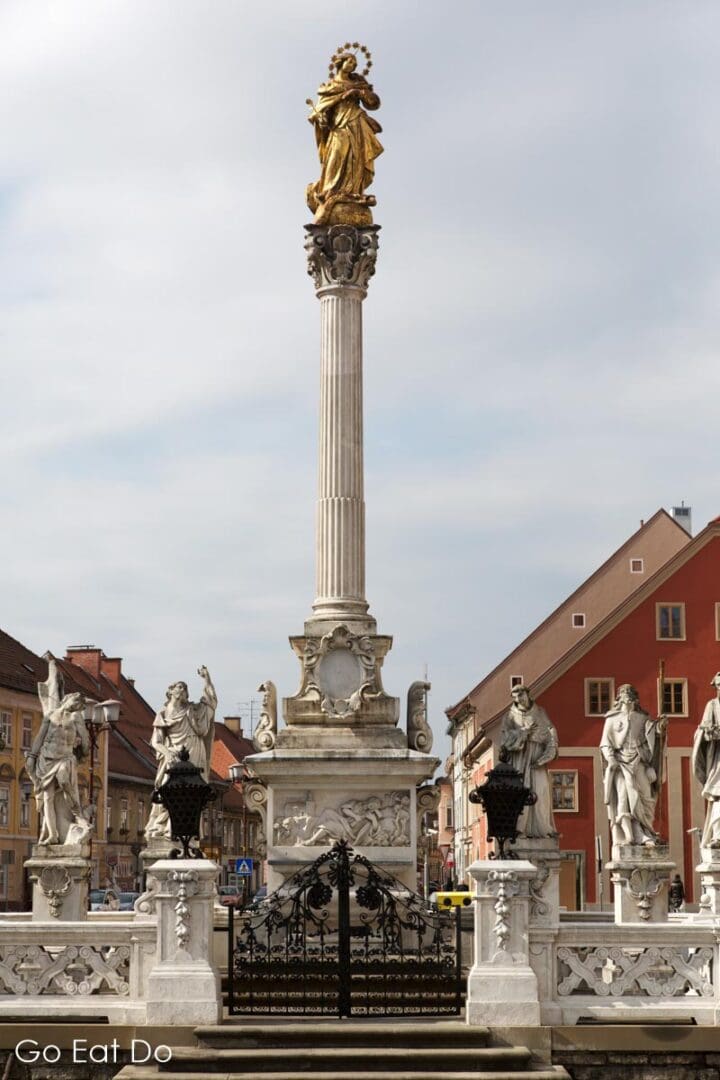
We’ve agreed that we’ll end the tour at the Old Vine House (Vojašniška ulica 8), close to the riverside in Maribor’s historic Lent district. I’m booked in for a tasting of regional wines.
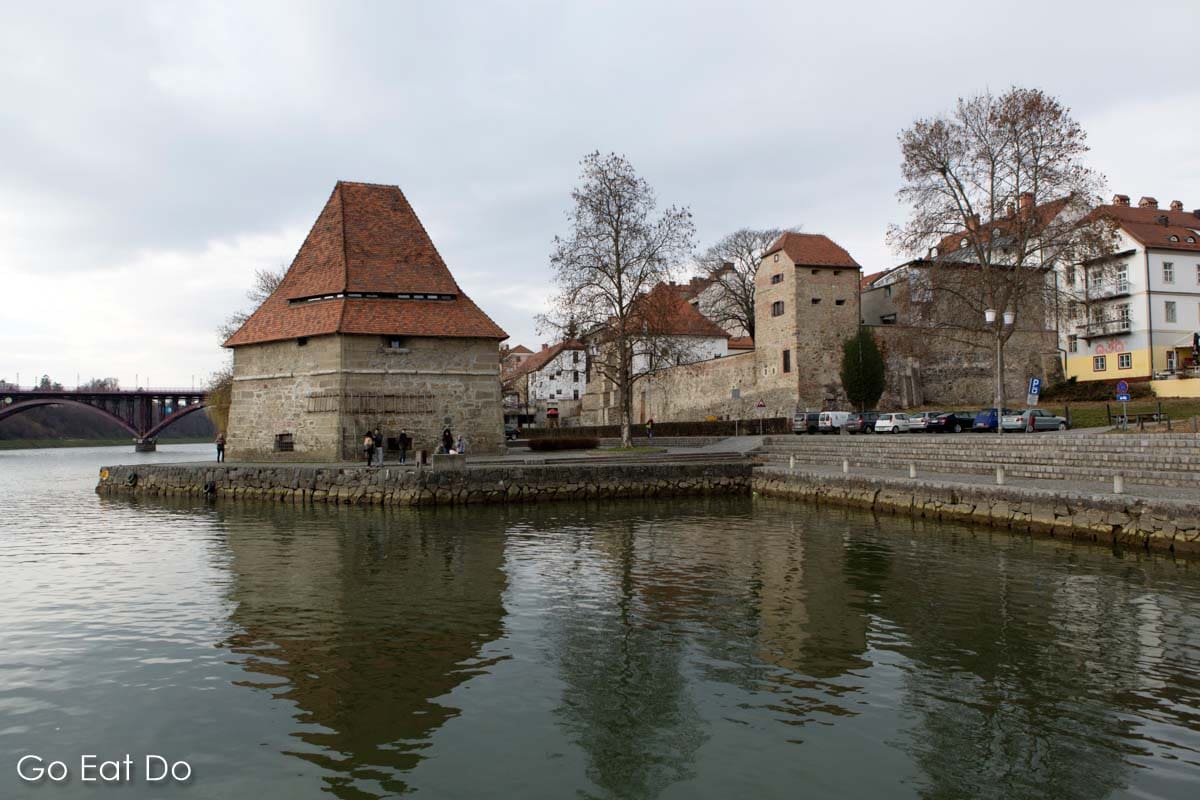
The world’s oldest vine grows outside of the building, which houses Slovenia’s largest contemporary mosaic. The vine is more than 450 years old.
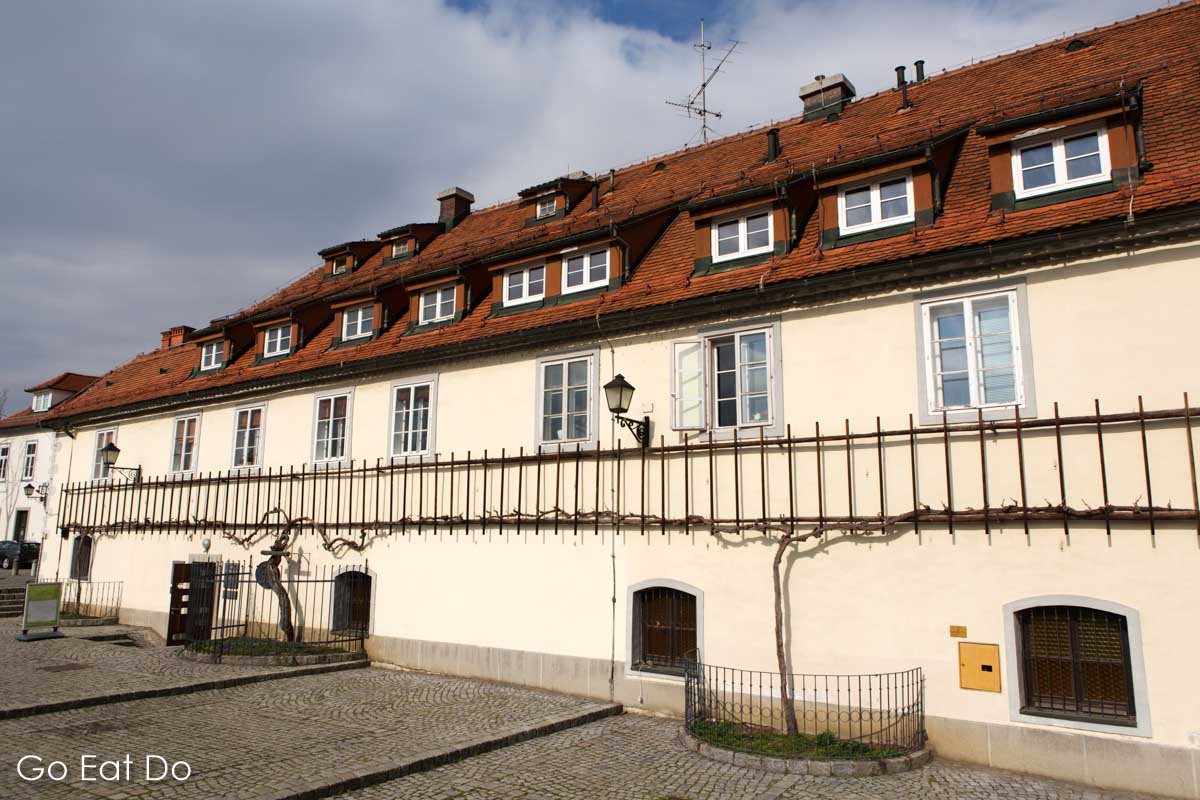
A walking tour of Maribor
The walking tour is proving informative. It’s a way of orientating on my first afternoon in Maribor and learning about the history of this city of almost 100,000 people.
Thanks to small talk about football, I’ve also learnt that NK Maribor have a home game during my stay. Helpfully, Tomaž explains that it will be possible to buy a match ticket at the club shop in the town centre.
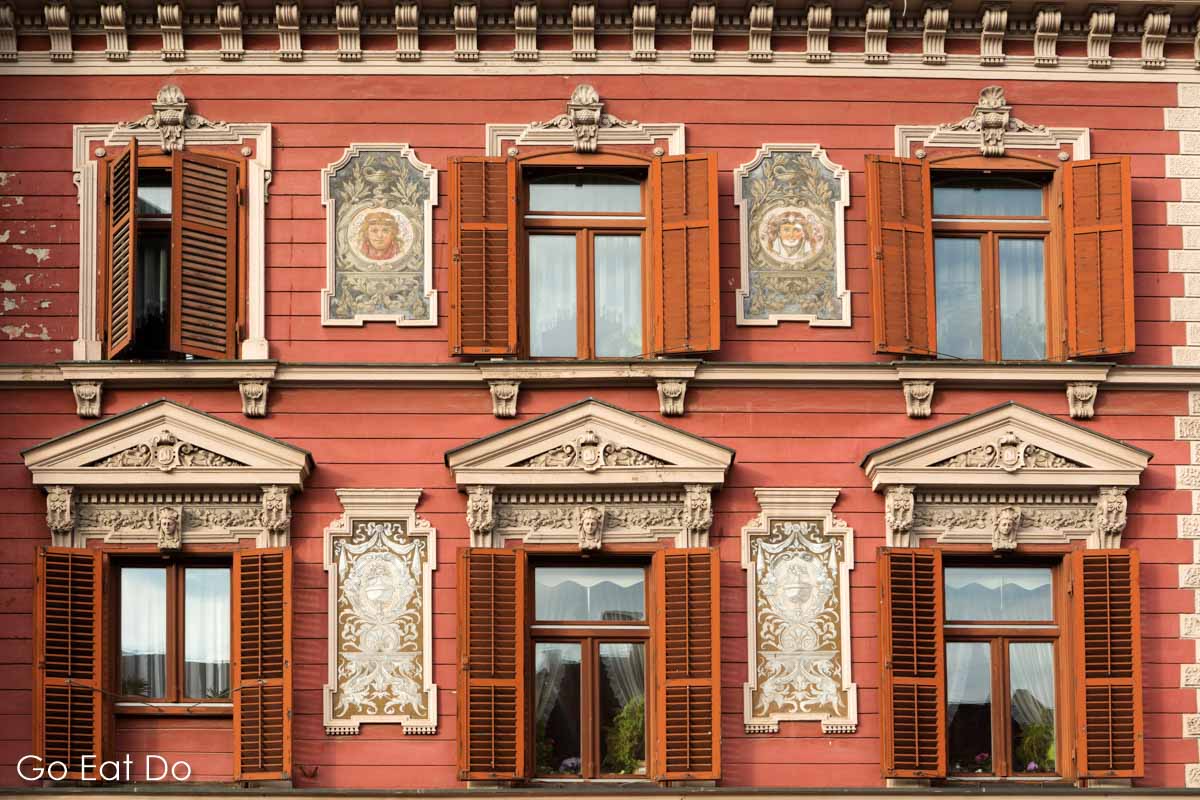
Strolling along Gosposku ulica, a shopping street in the heart of the city, Tomaž informs me this is where wealthy people used to promenade in their finest clothing. These days Maribor has a distinctly casual vibe.
Visiting Maribor Cathedral
As we approach Maribor Cathedral (Slomškov trg 20) Tomaž points out a statue of Anton Martin Slomšek who lived from 1800 to 1862. He strikes me as a dead ringer for pop star Phil Collins.

Slomšek was the author of children’s books and a poet. He promoted the Slovene language and culture.
Pope John Paul II beatified Slomšek on 19 September 1999 and prayed at his marble tomb. A stained glass window commemorates that day.
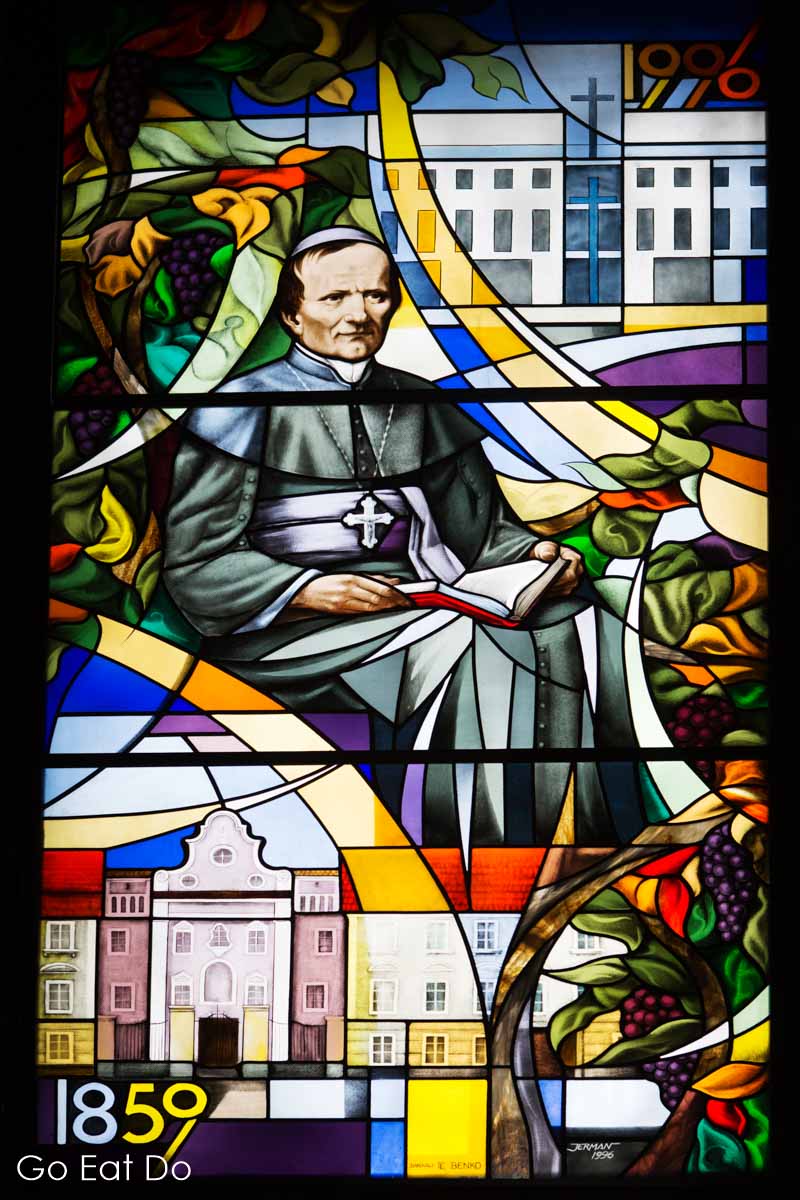
I can’t help noting that the depiction of Slomšek on the window looks more like American actor and comedian Robin Williams than Phil Collins.
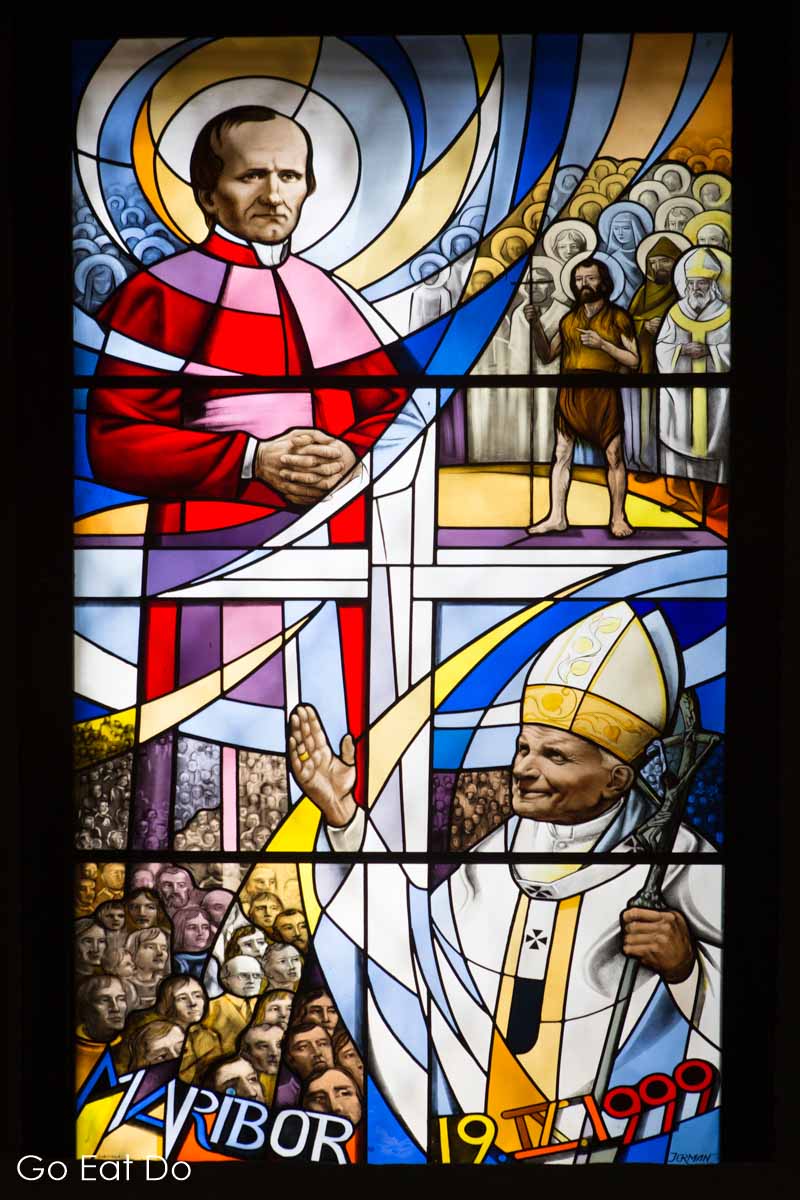
Maribor during World War Two
The cathedral was one of many buildings in Maribor damaged by bombs dropped during Allied air raids in World War Two.
In 1943 the city’s Nazi occupiers forced workers to excavate tunnels 15 metres below ground. Tours of the Tezno Zone’s arching concrete bunkers outline Nazi plans for industrial production out of reach of the bombing raids.
The arrival of the Austrian Southern Railway almost 100 years before that, in 1846, helped transform Maribor. It evolved into one of the Austro-Hungarian Empire’s industrial hubs.
German speakers remained until their expulsion at the end of World War Two. The Austro-Slovenian border is less than 20 kilometres away.
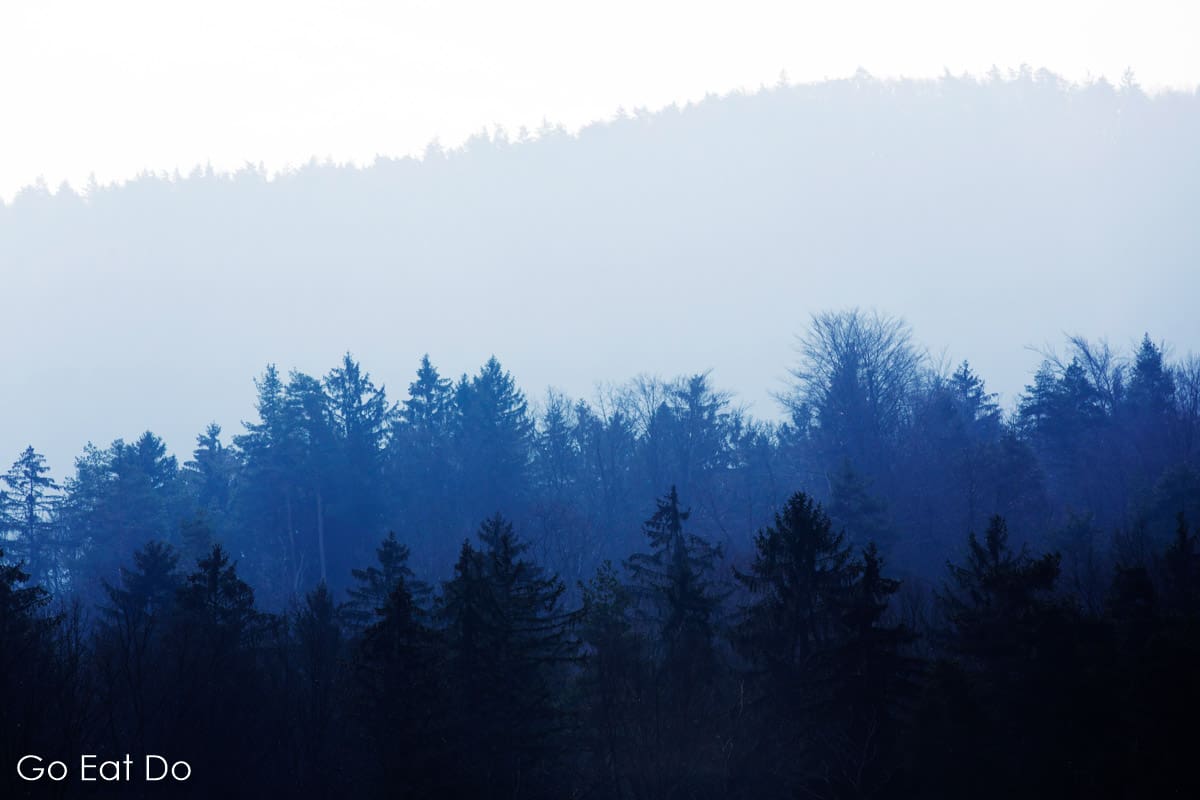
Maribor after the Ten-Day War
Heavy industry played a significant role in Maribor’s economy until Slovenia gained independence from Yugoslavia in 1991.
Tomaž explains that buses, trucks and steel were produced in Maribor until Slovenia lost access to the Yugoslavian market at the beginning of the 1990s.
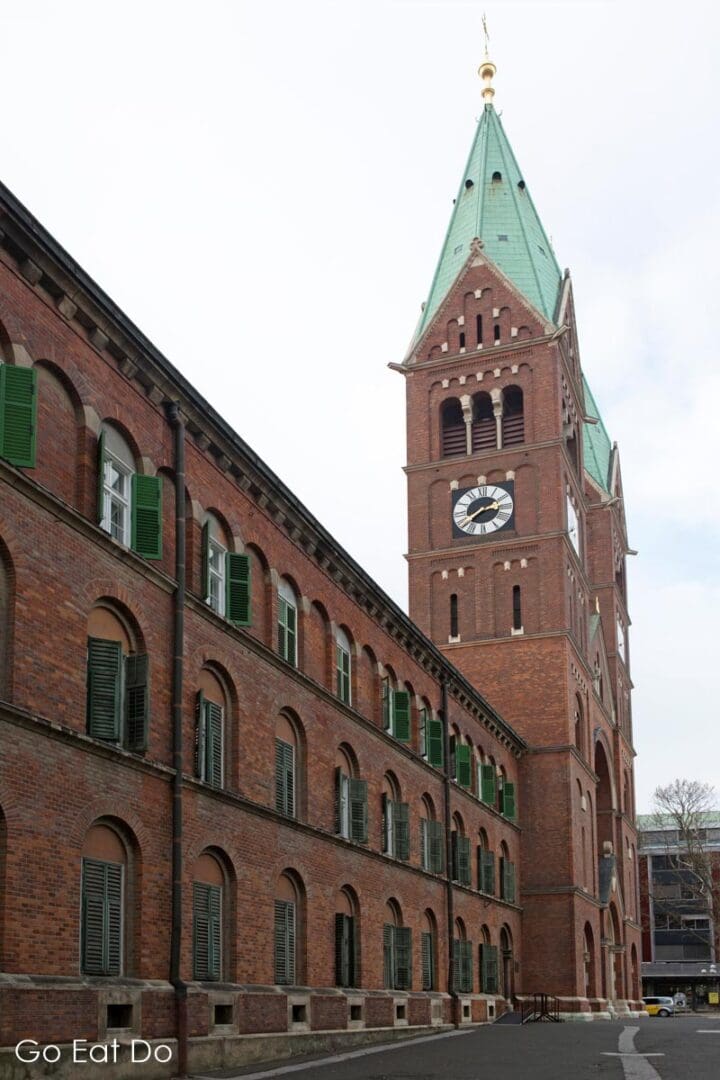
“Especially for Maribor, it was a tough time. The rate of employment increased. If you didn’t have a job or money things became tough,” he says.
People re-skilled and new specialisms evolved. Viniculture, other forms of agriculture and wine tourism today provide employment. So too does education. The University of Maribor now attracts around 14,000 students.
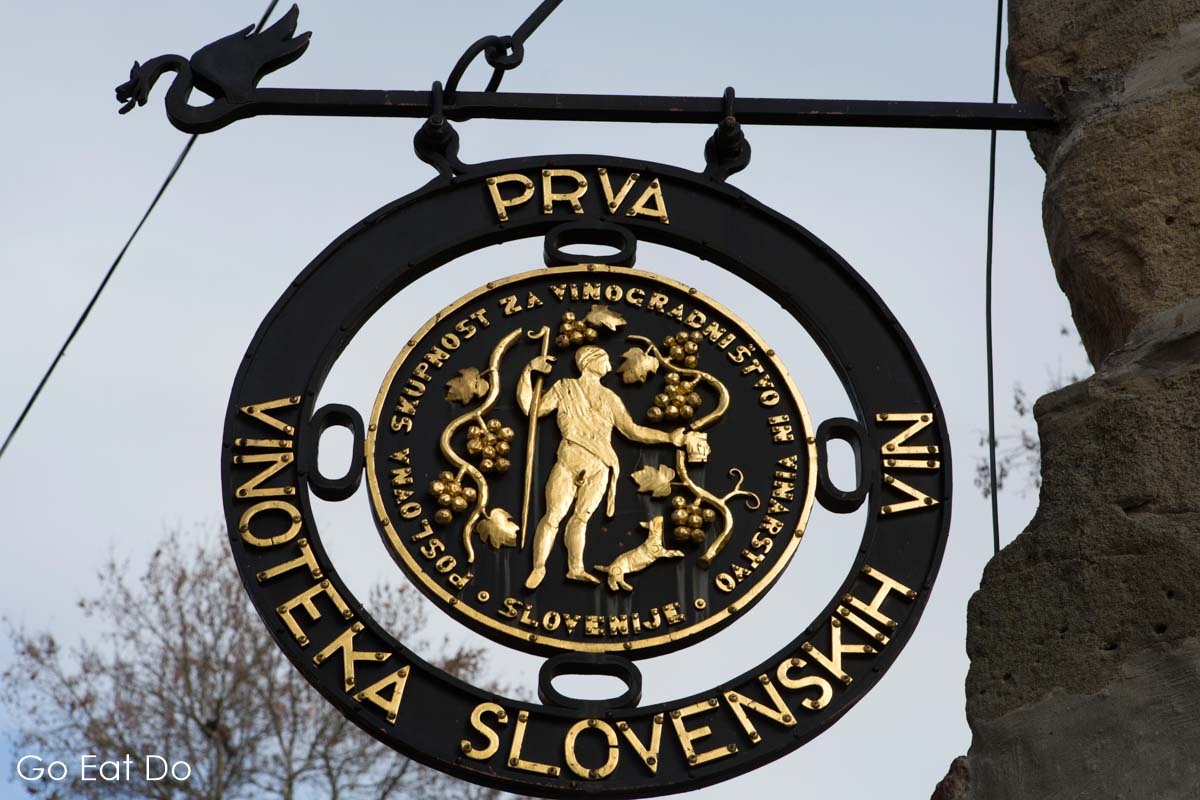
The legend of the shoemaker
Walking towards the riverside Lent district, Tomaž recounts the legend of the shoemaker’s apprentice who saved the city in 1532.
Moats around the city walls had not been flooded ahead of an Ottoman army’s arrival. They besieged the city and were sapping the walls from within the moat.
With a glint in his eye, my guide describes how the brave young shoemaker disguised himself, slipped out of the city and opened the sluice gates. Water flooded into the moats. Many members of the besieging army drowned. The siege was lifted.
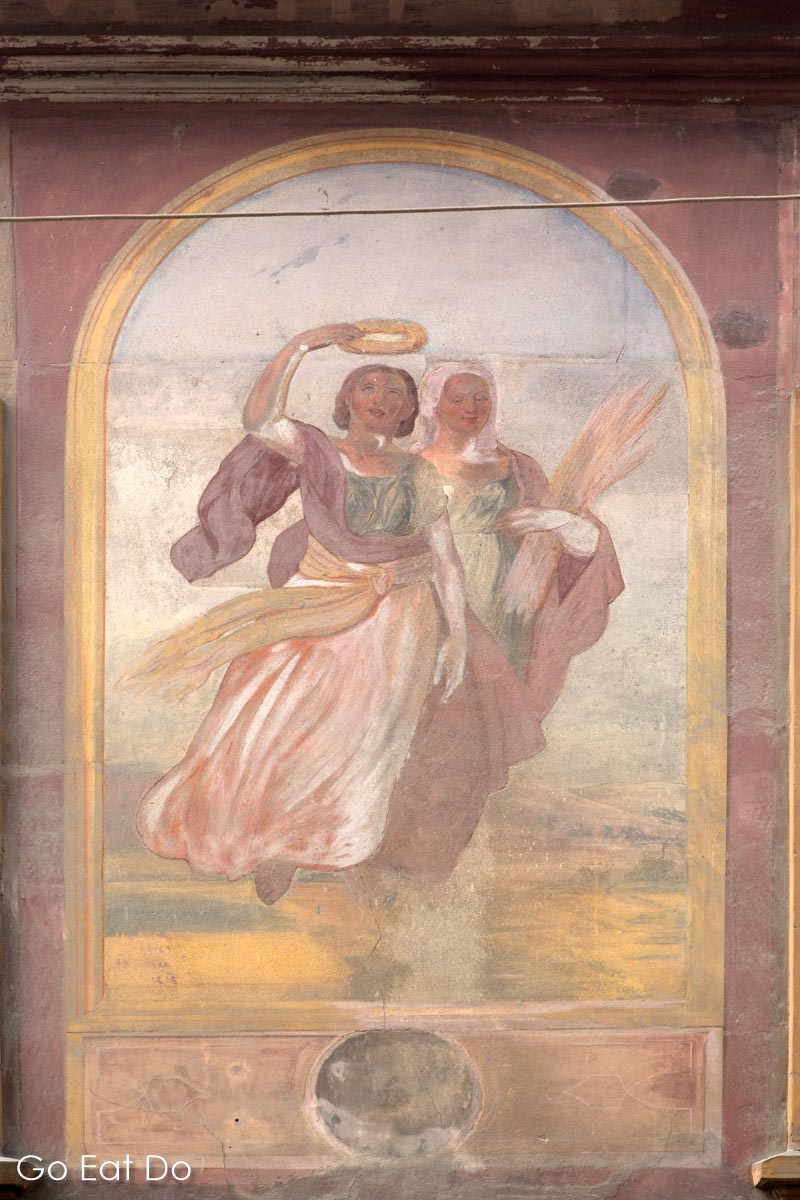
The riverside Lent district
The River Drava flows through Maribor. Trees used to be felled upriver, tied into log rafts and floated along the waterway, which flows into the River Danube. The waterway allowed wood and other goods to be transported to Belgrade and elsewhere.
Towers and walls that were long ago part of the city’s defences continue to stand by the riverbank.
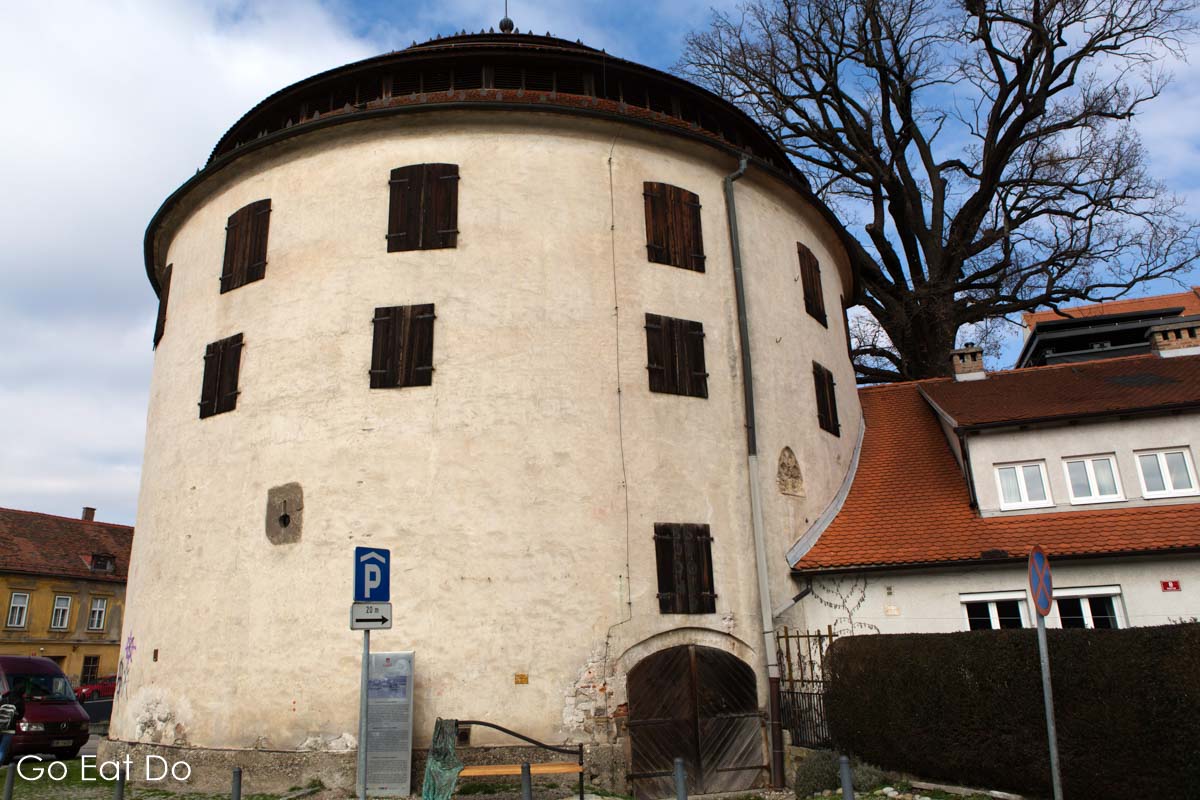
Lent is the site of several of Maribor’s oldest buildings, including one of Central Europe’s oldest synagogues. I’ll decide to return tomorrow for a waterfront stroll.
My Maribor walking tour is coming to an end and I thank Tomaž. We’ve reached a beige building with a gnarled vine behind a metal fence. The world’s oldest vine stands outside the logically named Old Vine House. It’s time for me to sample still and sparkling wines from Slovenia.
9 top things to do in Maribor
Here’s an overview of places to visit while visiting Slovenia’s second city:
Head underground and taste wine
A vast wine cellar is also hidden below the streets of central Maribor. More than 20 kilometres of passageways were excavated during the mid-19th century. It’s possible to join guided tours of a section of the cellars, which hold enormous wooden barrels.
Vinag Wine Cellar (Trg svobode 3), at Freedom Square, hosts tastings which can be combined with tours.
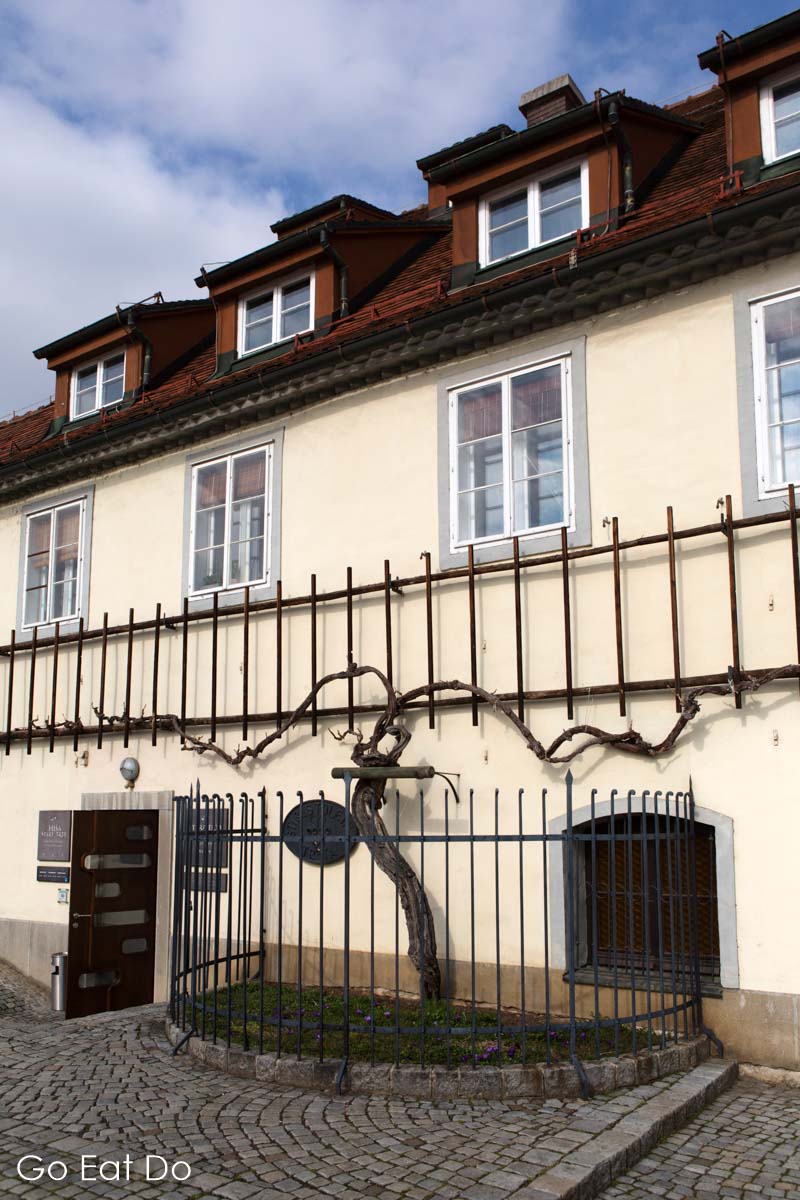
View the city from Maribor Cathedral’s bell tower
Climb the 162 steps to view Maribor and the surrounding countryside from the observation platform on the cathedral’s belfry.
The tower used to house a lookout whose job was to ring the bells to warn of fires in the city. The former guardroom tells the story of that job.

Alternatively, some of the best views of Maribor are from the slopes of the Pohorje Mountains.
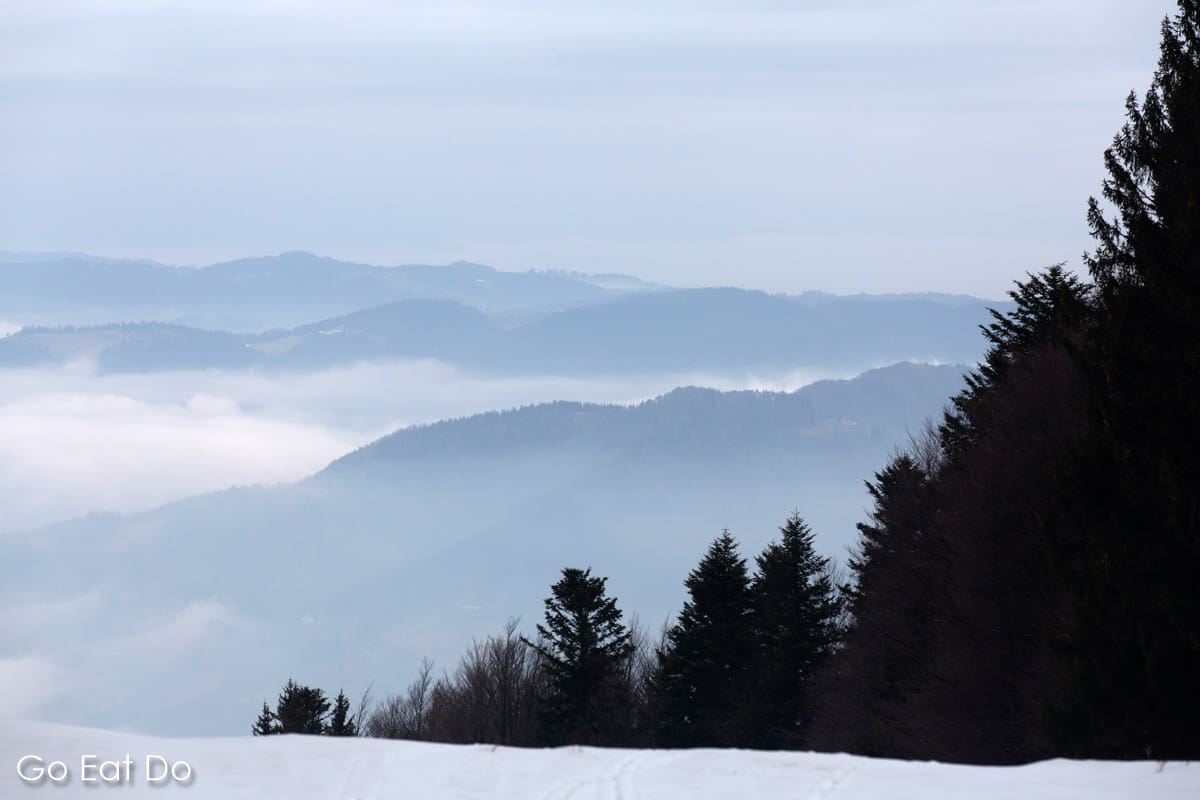
Visit Maribor Regional Museum
Visiting the Maribor Regional Museum provides an opportunity to step inside of Maribor Castle. The castle dates from the 1470s. A dramatic painting of a battle between Habsburg and Ottoman forces is depicted on the ceiling of the Festive Hall.
The museum introduces the story of the region and the evolution of the city and its defensive walls. The historic pharmacy exhibit is one of the museum’s highlights.
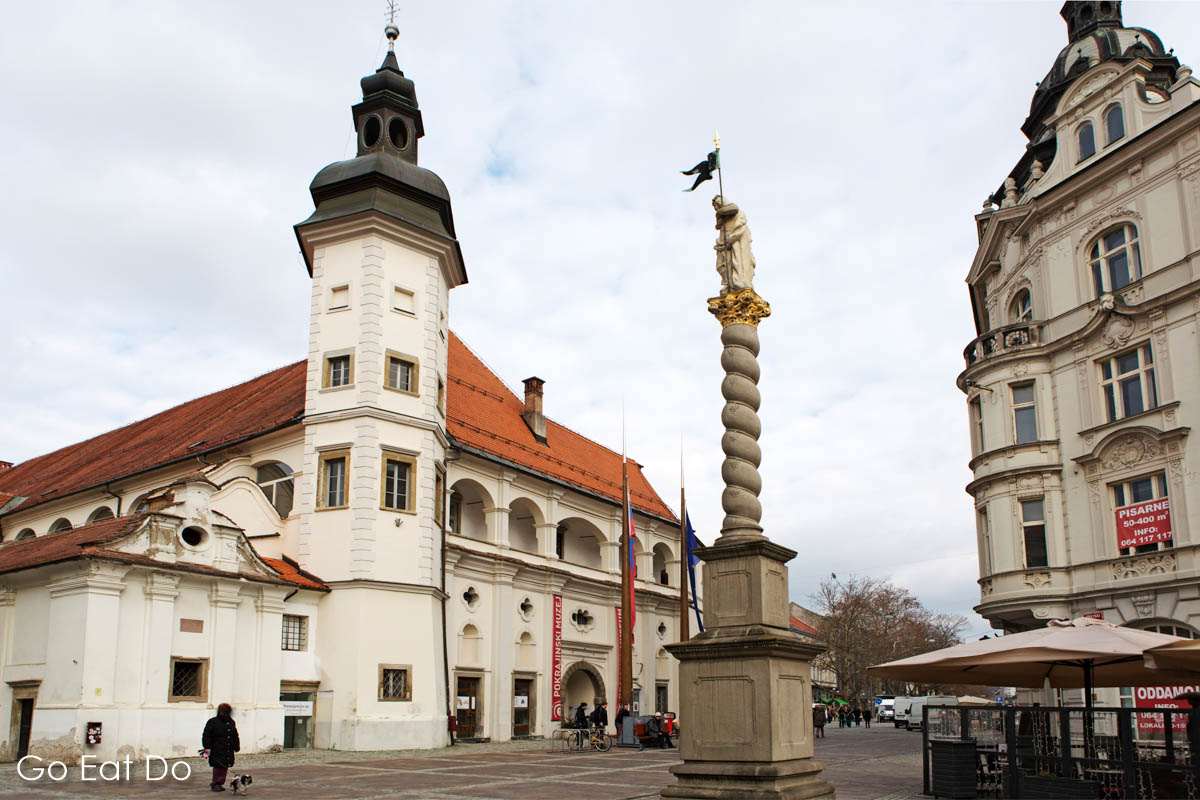
Learn about resistance during World War Two
Interested in knowing more about the Nazi occupation of Slovenia and the resistance movement? Join a guided tour of the National Liberation Museum Maribor.
The museum’s six rooms tell the story of the occupation and the region’s Germanisation. They also explain the role of partisan units in the country’s liberation.
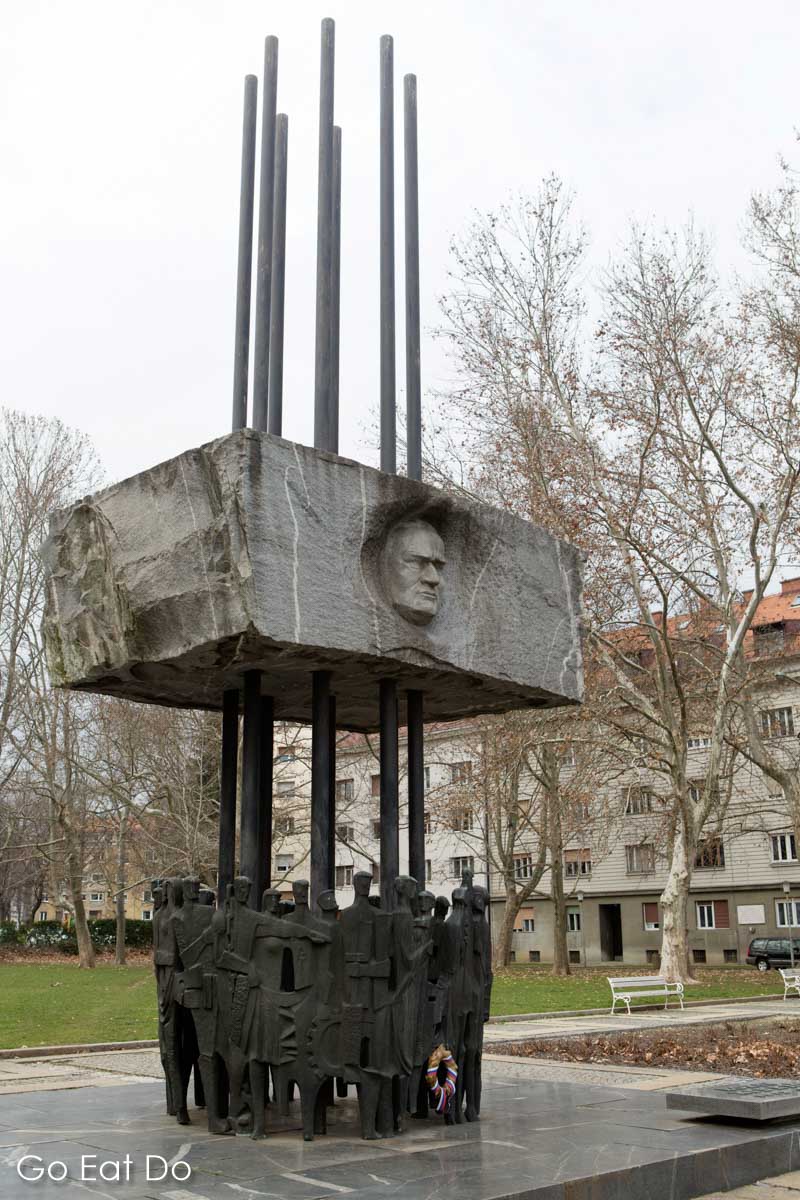
Pop into the Photography Museum Maribor
The Photography Museum Maribor (Koroška cesta 19) hosts an expansive collection of cameras, projectors and photographic accessories. Prints are also displayed in the museum.
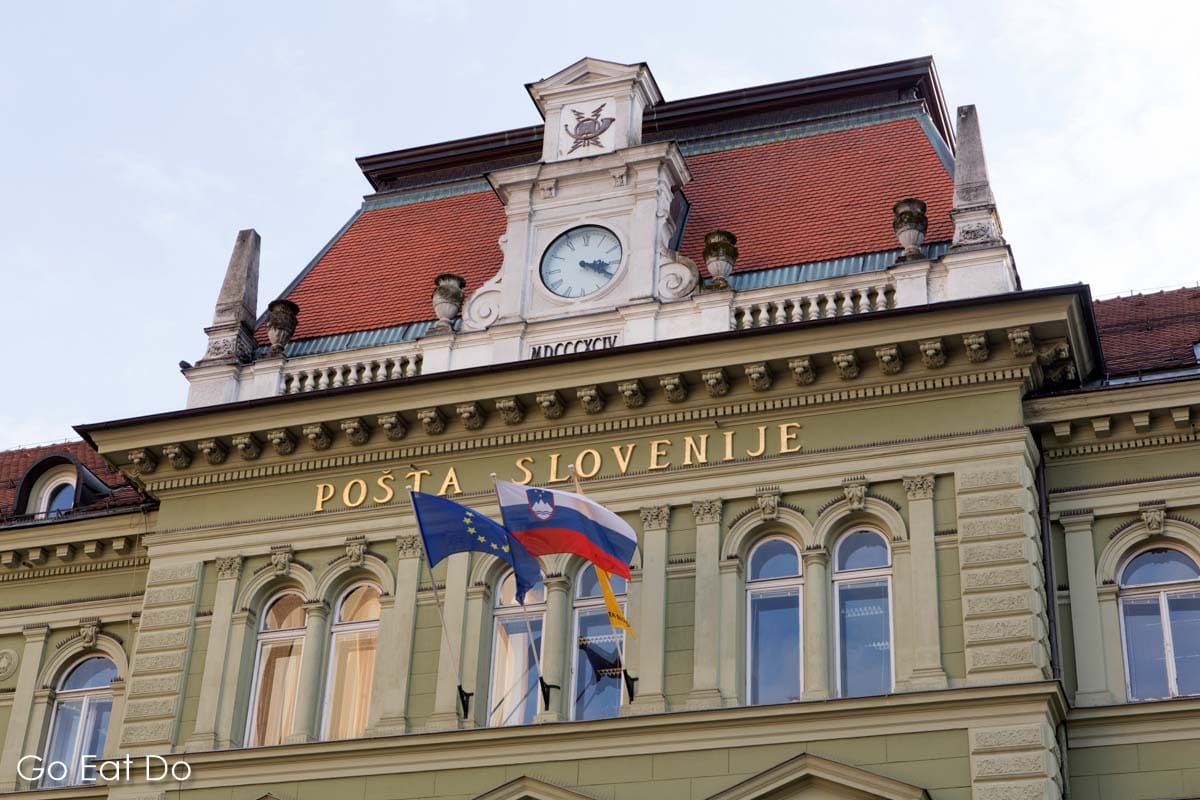
Tour Maribor Art Gallery
Maribor Art Gallery (Strossmayerjeva ulica 6) is known by the acronym UGM. Founded in 1954, this art museum’s collection contains approximately 7,000 artworks, chiefly Slovenian pieces dating from the 19th century onwards. Video art features in the UGM’s collection.
From May into September the gallery offers English language tours on Tuesday and Friday mornings at 11.00 am. Their focus is Slovenian art from the 19th and early 20th centuries, including works by Zoran Mušič and Ivana Kobilca.
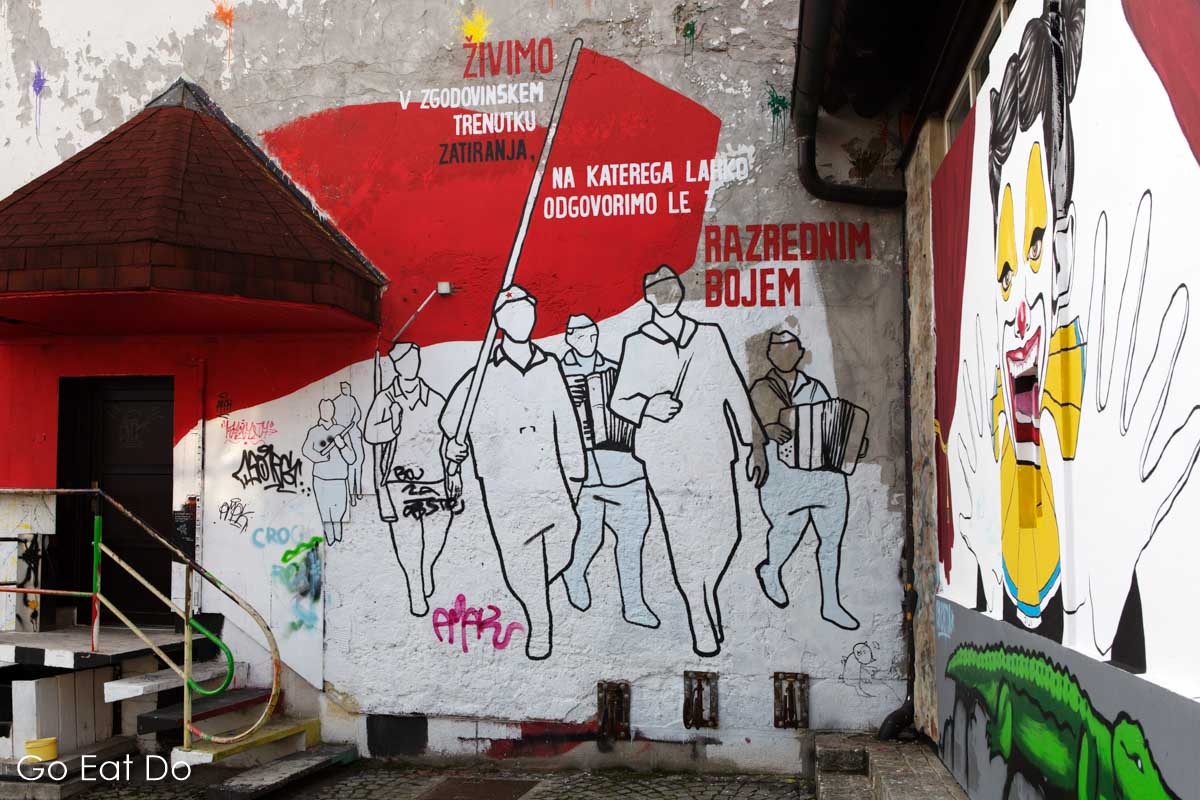
Step inside the Maribor Synagogue
The Maribor Synagogue (Židovska ulica 4) is one of the oldest in central Europe. The historic building dates from the 14th century.
In 1497 the city’s Jewish population was expelled. For a time, the building was converted into a church. It was later used as a warehouse.

Jewish people began returning to Maribor in the 19th century. Those who remained were persecuted after the German forces invaded Yugoslavia in 1941.
The former place of worship now hosts the Center of Jewish Cultural Heritage Synagogue Maribor. Displays and artefacts convey aspects of the history of Judaism in Slovenia’s second city. Cultural and commemorative events are hosted at the centre.
Watch an NK Maribor football match
Maribor is the home to one of Slovenia’s most successful football clubs.
Since the inception of the country’s PrvaLiga in the 1991-92 season, NK Maribor have been champions 15 times.
The club plays at the Ludski vrt stadium, whose name translates into English as the ‘people’s garden’.
The club is nicknamed the violets and their principal rivals are Olimpija Ljubljana. Olimpija’s main club colour is green, so you may want to wear a different colour while visiting the stadium.
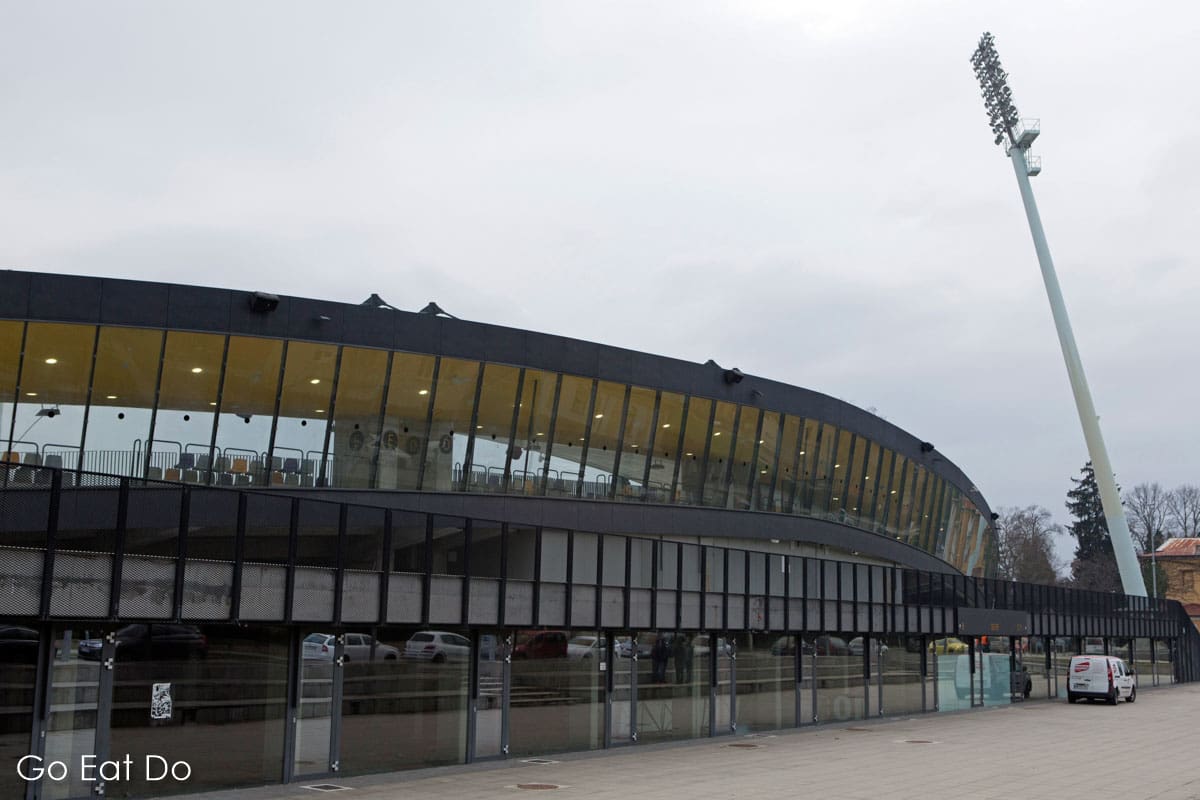
Spent time outdoors in Maribor Pohorje Ski Resort
Maribor Pohorje Ski Resort is a 10-minute drive from Maribor city centre. It is rated as Slovenia’s premier ski resort with nearly 42 kilometres of pistes.
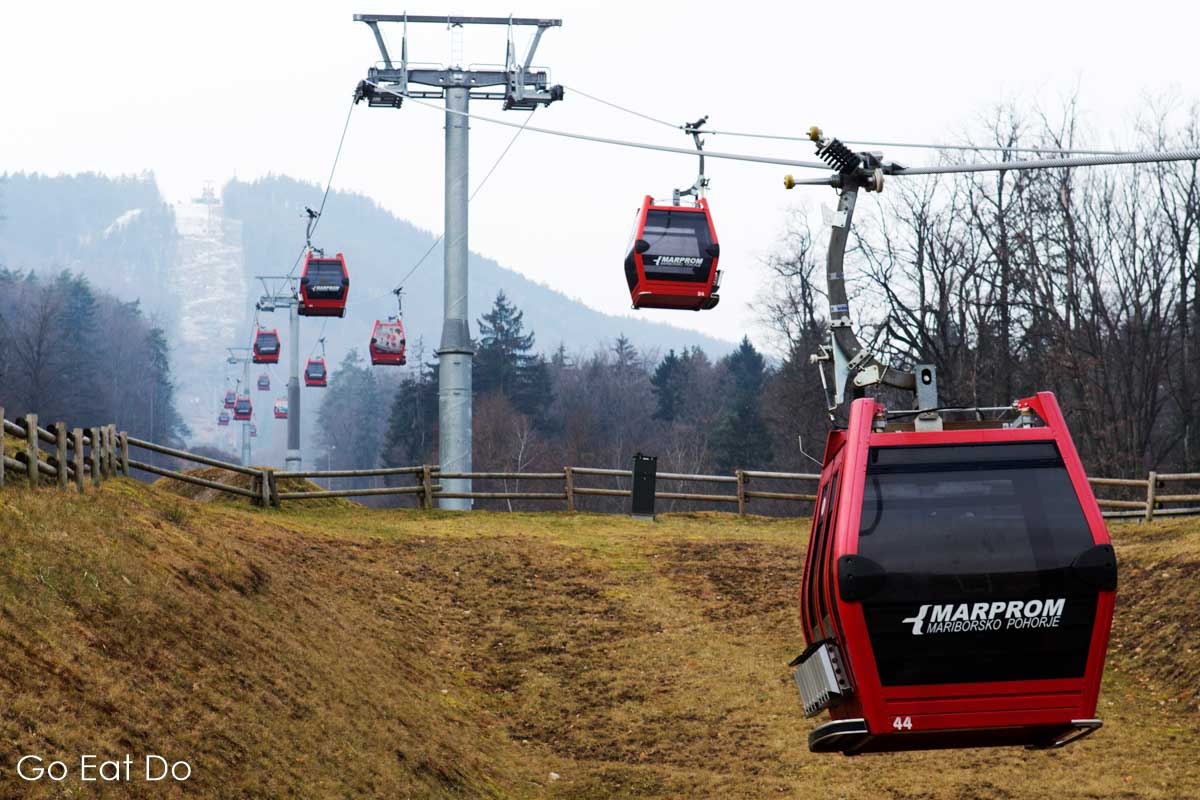
Into hiking? The Pohorje Mountains are crisscrossed with trails offering views into the valleys below.
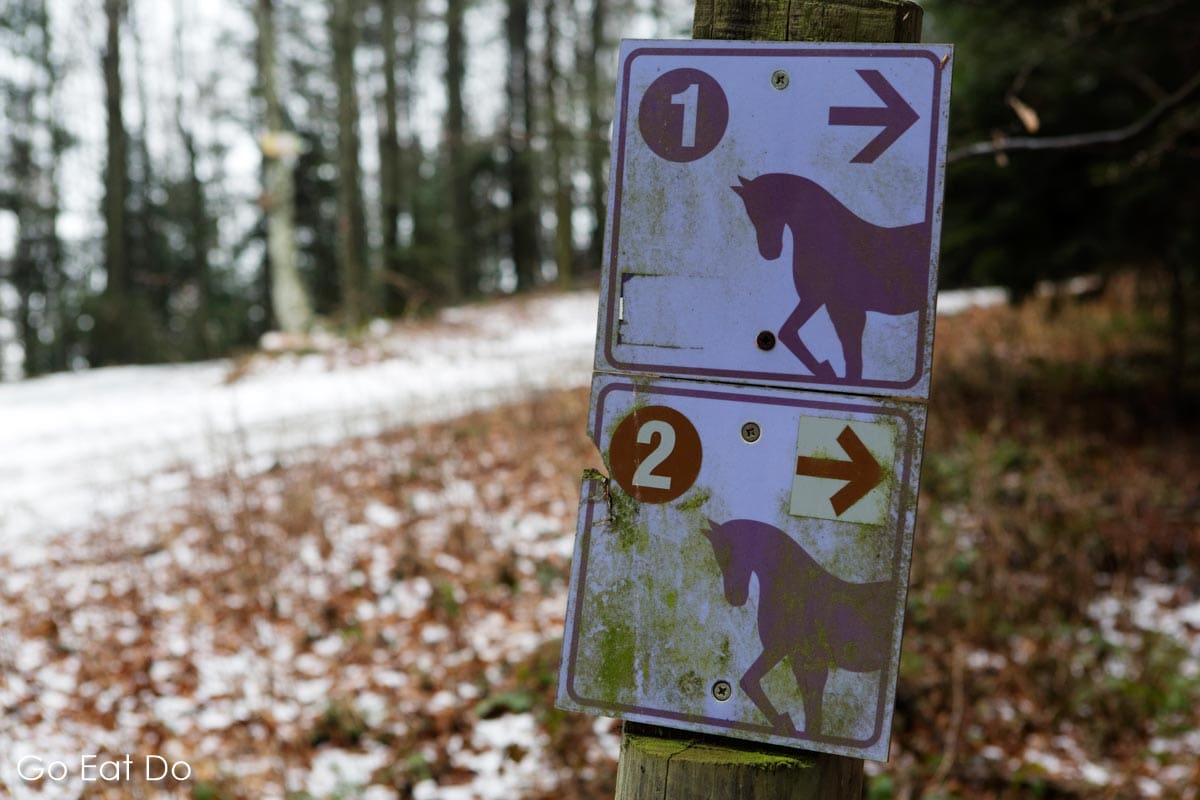
Horse riding and mountain biking are also popular activities.
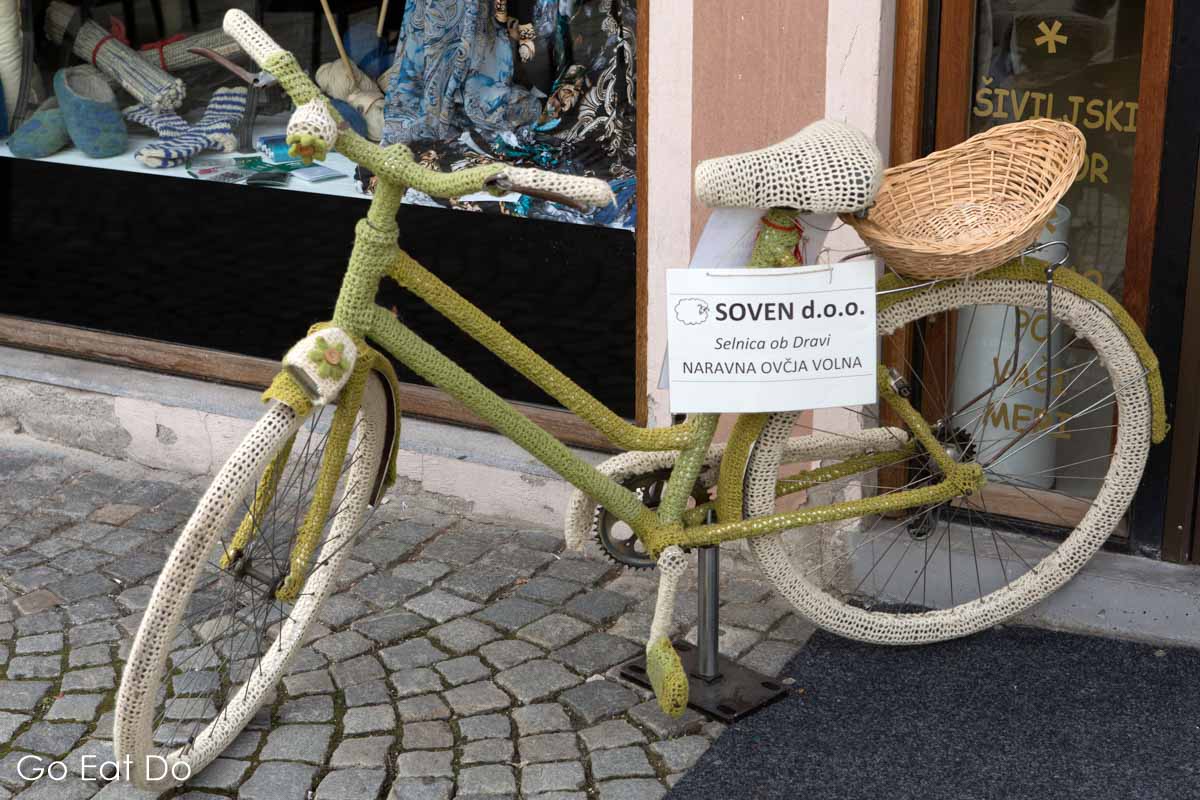
The Bike Park Pohorje has tracks of varying difficulty levels and is a UCI Mountain Bike World Cup venue.
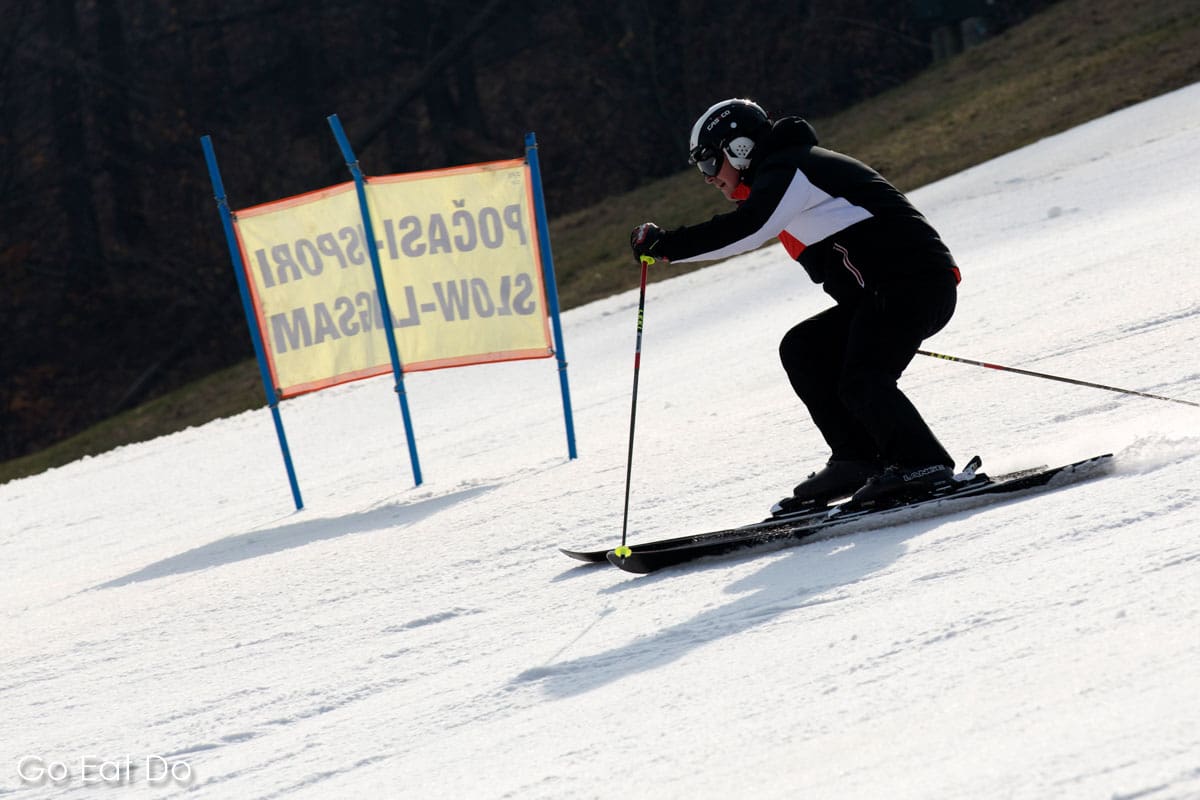
7 facts about Maribor, Slovenia
Travelling to Maribor with friends? Impress them with your knowledge of Slovenia’s second city:
- Maribor was granted city rights in 1254.
- For many years, the city formed part of the Habsburg Empire. It was known by the German name of Marburg or Marburg an der Drau (which translates to ‘Maribor on the Drava’).
- Maribor was one of two cities named the European Capital of Culture in 2012. In case you’re wondering, the other was Guimaraes in Portugal.
- In 1532 Maribor was besieged by a vast Ottoman army under the leadership of Suleiman the Magnificent. The city’s garrison and local people fended off an army that was reputedly 100,000 strong.
- Inventor Nikola Tesla lived in Maribor during the late 1870s. His first job, as a draughtsman, was at a company based in the city.
- Slovenia’s first electric street lighting was switched on at Maribor’s Castle Square in 1883. At that time the city was part of the Austro-Hungarian Empire.
- Leon Štukelj Square is named after a gymnast who won six medals at Olympic Games from 1924 to 1936. Štukelj died aged 100 in Maribor, whose university sports centre bears his name. 100 trees were planted in the City Park in 1998 as part of celebrations marking his 100th birthday.

Travel to Maribor, Slovenia
Maribor is approximately 130 kilometres (80 miles) northeast of Ljubljana, the capital city of Slovenia. Flying to Ljubljana Jože Pučnik Airport is one way of getting to Maribor.
Driving between the two cities takes about 80 minutes, with the A1/E57 providing the most direct route.
Buses take about one hour and 40 minutes for the journey between Ljubljana bus station (Austobusna postaja Lubljana) and Maribor.
The fastest trains between Ljubljana and Maribor take one hour and 50 minutes. Most trains take about two-and-a-half hours.
Graz Airport in Austria is closer to Maribor than Ljubljana. Driving south to Maribor on the A9/E59 takes approximately an hour. Train travel is also an option, taking around an hour to 80 minutes.
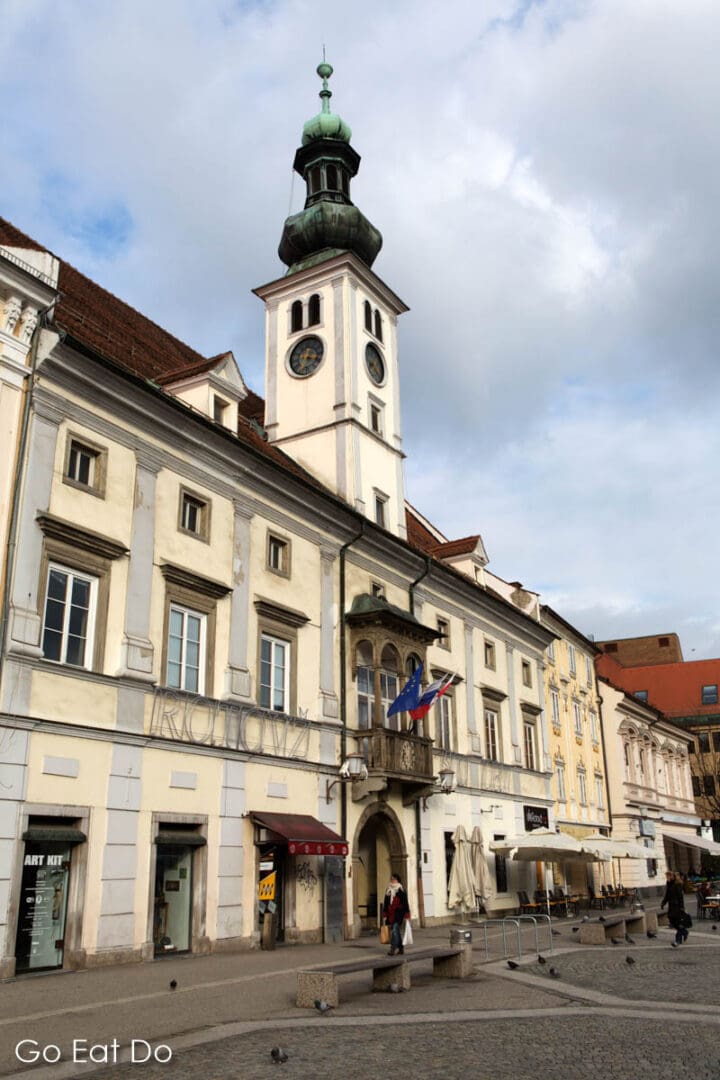
Alternatively, flying to Zagreb Franjo Tuđman Airport in Croatia and then travelling north is an option. Driving on the A2 and A4/E59 takes about two hours. Allow around three hours for rail journeys between the two cities.
See the UK Government website to see official Foreign, Commonwealth and Development Office advice about travel to Slovenia.
Maribor hotel options
Looking to stay in one of the best hotels in Maribor?
The Hotel Habakuk (Pohorska ulica 59, Maribor) is a four-star hotel with a sizable wellness spa and conference centre on the edge of Maribor. The 132-room hotel is about four miles from the city centre, in the Pohorje Mountains. A minute’s walk from the Pohorje Cable Car, the Hotel Habakuk is well-situated for hiking or winter sports in the Central Alps’ Pohorje Massif.
The hotel has provided accommodation to several of Europe’s top football clubs while they visited the city for European fixtures against NK Maribor. Shirts worn by Chelsea and Wigan Athletic players are displayed in frames.
The Hotel Piramida (Ulica heroja Šlandra 10) is a centrally located, four-star property with a sauna and conference centre. Appreciate contemporary art? Original artworks by renowned Slovian artists adorn the walls of the hotel’s Art Coffee House.
With 55 rooms, Hotel Tabor (Ulica heroja Zidanška 18) is located on the south side of the River Drava near Maribor Studenci railway station.
Like the idea of apartment accommodation? The Hotel Maribor (Glavni trg 8) has stylish apartments and a spa to relax in.
Search for a hotel in Maribor via the Booking.com website:
Map of Maribor
Zoom in on the Google Map to view Maribor and key attractions in Slovenia’s second city:
When to visit Maribor
Maribor is a year-round travel destination.

The city’s annual Lent Festival is held in the summertime, for two weeks spanning June and July. Confused? The cross-genre cultural event is named after the city’s riverside Lent district rather than the period preceding Easter. Pop-up restaurants, live music, dance and street theatre all feature as part of the festival.
Stages are set out in Maribor’s City Park and public squares. David Byrne, B.B. King and Ray Charles count among the musicians who have performed at the Maribor Lent Festival.
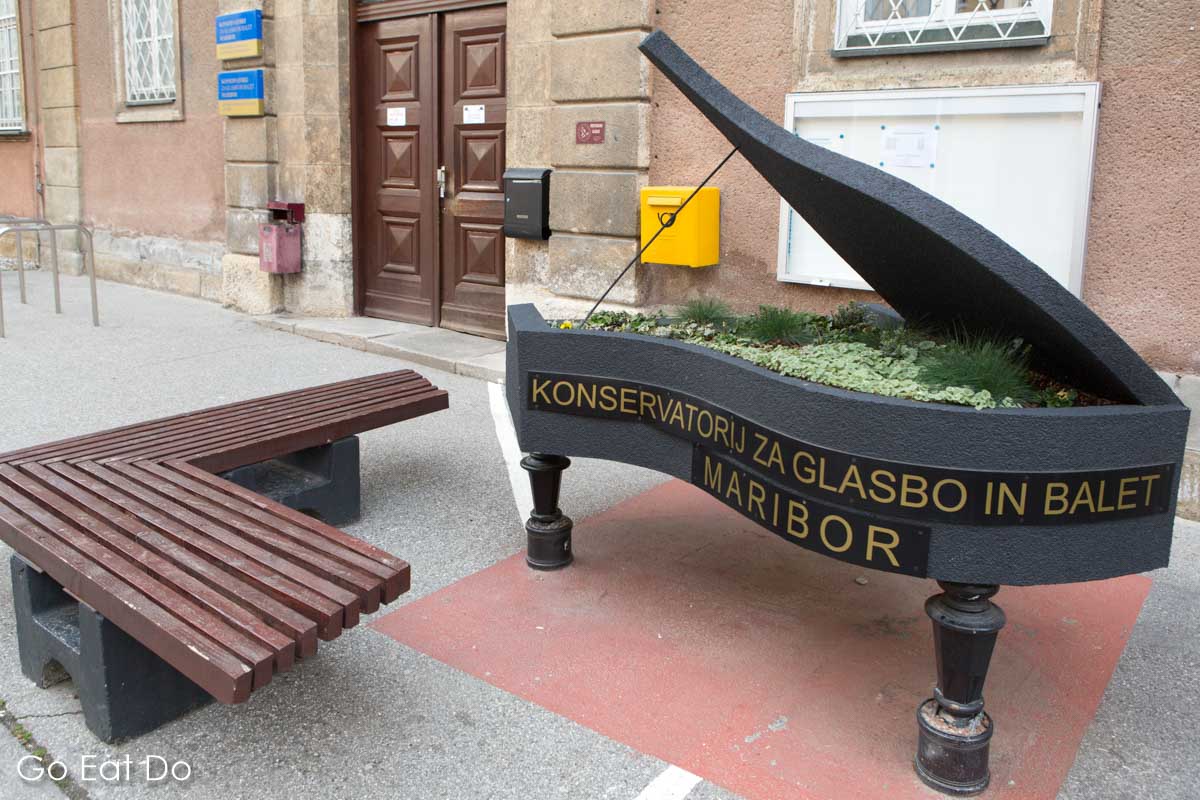
Consisting of giant slalom and slalom races for female skiers, the annual Golden Fox forms part of the International Ski Federation’s World Cup. The event is held in January or February. It is famed for the upbeat atmosphere generated by spectators in the Maribor Pohorje Ski Resort.
Books about Slovenia
Planning a trip to Maribor? You may find the following books of interest:
Cicerone’s Walking the Julian Alps of Slovenia: Mountain Walks and Short Treks:


DK Eyewitness Slovenia travel guide:


Berlitz’s Slovenia Pocket Guide:

The Land Between: A History of Slovenia by Oto Luthar:

Holidays commemorating Slovenian independence
Slovenia became independent from Yugoslavia in 1991.
Statehood Day, on 25 June, is an annual holiday commemorating Slovenia’s declaration of independence. That independence came after the Ten-Day War.
Independence and Unity Day, on 26 December, marks the anniversary of the day that the results of a Slovenian referendum on independence were announced.
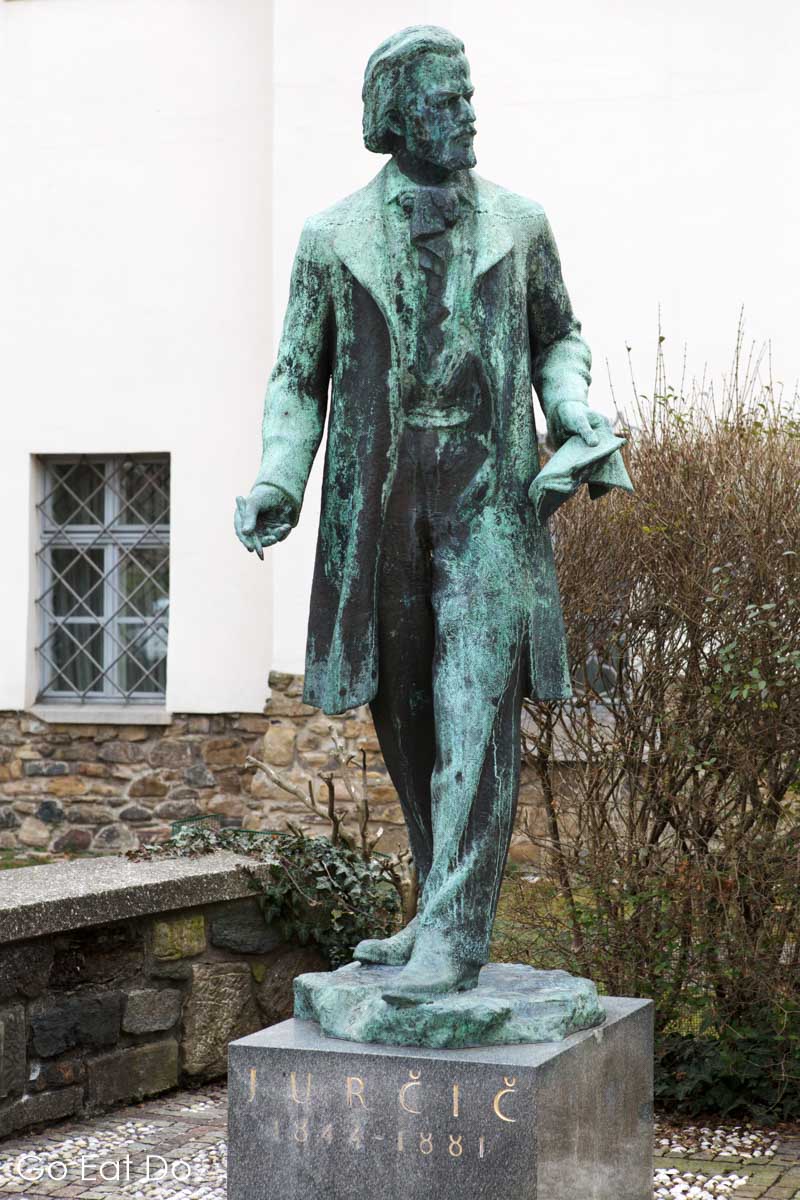
Weather in Maribor
See the BBC and Accuweather websites for forecasts of the weather in Maribor.
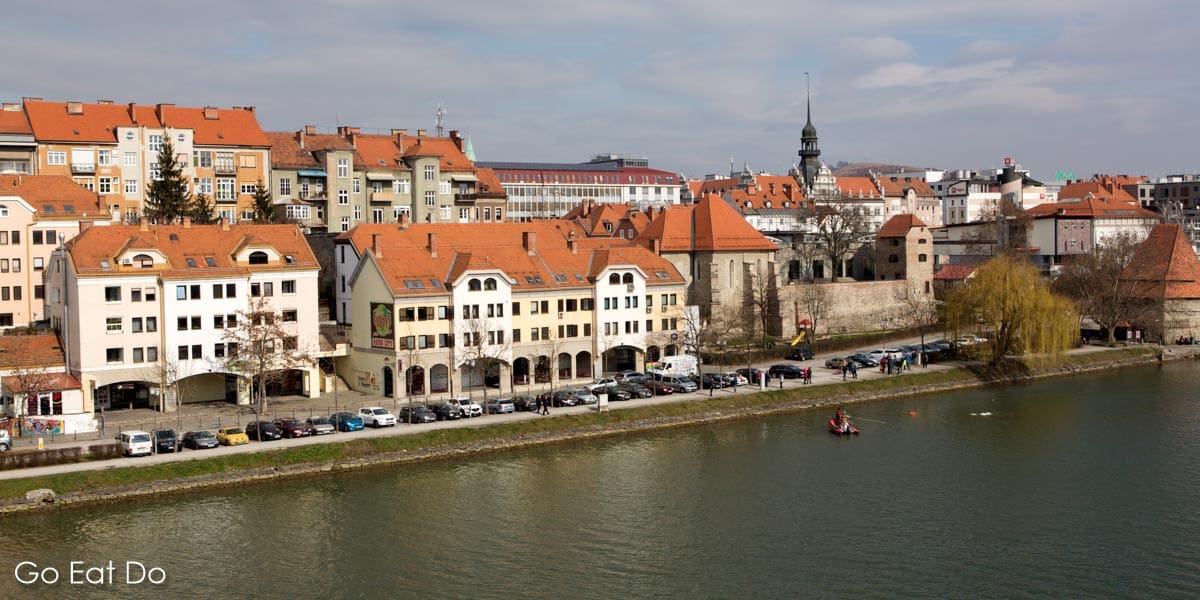
Further information
Take a look at the Visit Maribor website for information about things to do in Maribor.
The Slovenia Tourist Board website provides practical information about things to do in Slovenia.
This post was written by Stuart Forster, an award-winning travel writer based in northeast England. Stuart has written about Slovenia’s capital city Ljubljana for The Independent.
Thanks for visiting Go Eat Do and reading this post about Maribor. If you’re planning a journey to the city you may be interested in reading this post about hiking in Slovenia.
Like this post? Why not sign up for the free Go Eat Do newsletter? It’s a hassle-free way of getting links to posts.
If you’d like to sponsor a post or work with Go Eat Do please get in touch.
‘Like’ the Go Eat Do Facebook page to see more photos and content.
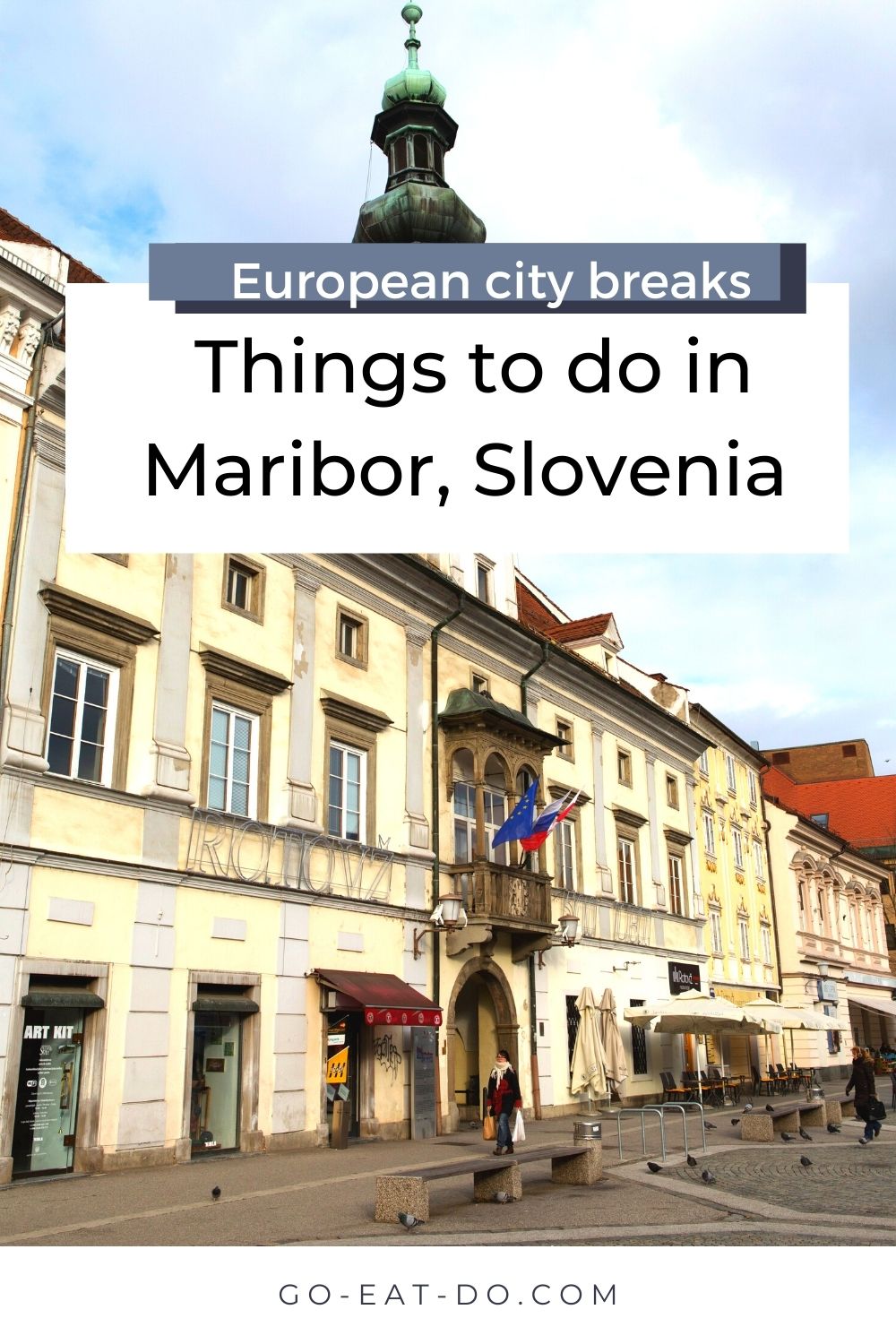



Brenda & Stu
June 22, 2021 at 20:42Slovenia is creeping further and further up on our destination list – I am seeing & reading so many great things. I will definitely be saving this post to come back to once we have Slovenia on our booked to go list!
Go Eat Do
June 23, 2021 at 10:36As a destination for walking and hiking it’s right up there. I have the impression Slovenia is ahead of the curve in terms of implementing measures for sustainability in travel.
Kathryn Burrington
July 13, 2021 at 19:39Those misty mountains look mesmerising. Love Slovenia but I’ve yet to make it to Maribor. Hope to get back there before too long.
Go Eat Do
July 15, 2021 at 16:28Fingers crossed that travel plans can become reality after being put on hold because of the pandemic.